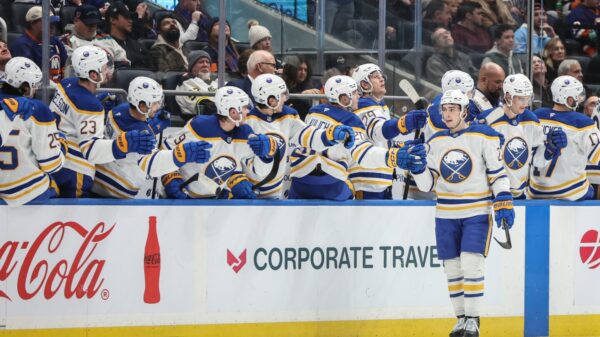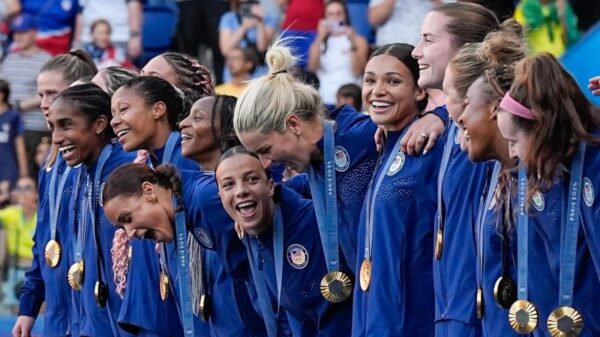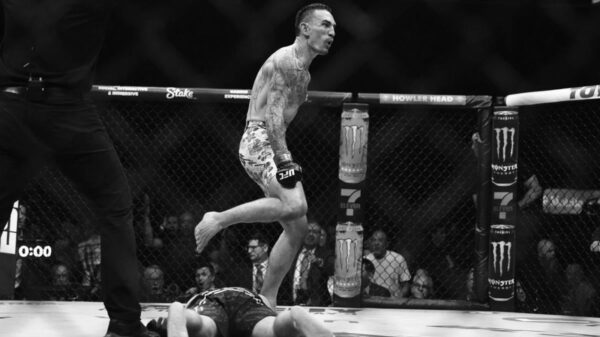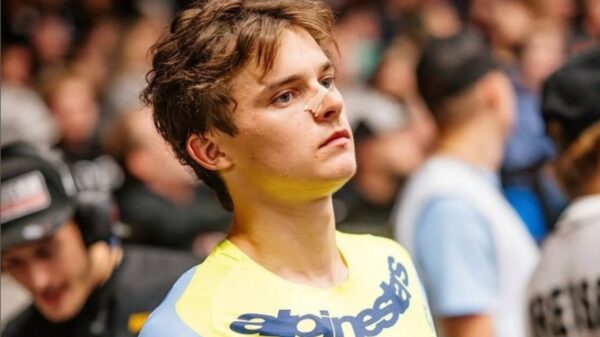The final details of the Karl-Anthony Towns blockbuster between the Knicks and Timberwolves were ironed out late on Tuesday, according to Shams Charania. We know how many second-round picks the Hornets are getting for the financial services they provided to our two, apron-inhibited protagonists (three). The sign-and-trade agreements involving Charlie Brown Jr. and Duane Washington Jr. appear to be done. It’s been five days since the agreement was reported, but now, finally, the deal appears done and the reality of one of the biggest autumn trades in NBA history is setting in.
Towns will be a Knick. Julius Randle and Donte DiVincenzo will be Timberwolves. But because of the unusual timing of the deal here, the fallout isn’t going to come for months or perhaps years. Both teams still have work to do. The players who were traded—and some who weren’t—are suddenly facing significantly more uncertainty than they were a week ago. The deal itself might be done. The ripple effects haven’t even begun.
That’s what we’re going to dive into today. Now that the blockbuster is complete, it’s time to figure out what comes next for the Knicks and Wolves, the players they either currently or used to employ, and the 28 other teams that watched all of this unfold.
1. The Knicks have a new center. What happens to their old one?
When the Knicks lost Isaiah Hartenstein, conventional wisdom suggested that they needed another high-end backup center at least. Mitchell Robinson has primarily been a starter, but he has an extensive injury history and typically thrives in a timeshare environment. You want him starting and playing 25 minutes, not 35 minutes, and you want to be prepared for the long stretches he tends to miss in the middle of most seasons. Hartenstein was the perfect partner for him, comfortable in any role with any amount of playing time. Towns is not Hartenstein. He is playing 35 minutes every night.
Can Towns and Robinson play together? Sure. Towns worked with Gobert, after all. He’s the best shooting big man in NBA history, at least by the numbers. Even as a power forward he’s a good spacer. Of course, the Knicks aren’t paying supermax money for good. Replacement-value shooting at center is significantly lower, and his shooting value is therefore significantly higher at center. Rudy Gobert was good enough to justify a suboptimal role. Is Robinson? It could work defensively. Towns is emphatically not a rim-protector. Robinson is a very good one, and Tom Thibodeau’s scheme leans heavily on its bigs. The “put Towns on the star, let the center serve as the roaming shot-blocker” approach slayed Nikola Jokic last postseason. It might still be an essential ingredient in a series against Joel Embiid and the Philadelphia 76ers if they meet in the 2025 playoffs.
But Robinson is set to miss the first few months of the season. By the time he’s back, the Knicks may have cemented an identity as a smaller team. Robinson as a backup center playing limited minutes, perhaps some alongside Towns, would be a great luxury, but a luxury nonetheless. When you have an All-Star center, you typically only want to pay for a decent backup. Precious Achiuwa fits that bill. It’s a matter of resource allocation more than anything. The Knicks are quite thin on the perimeter now, and perimeter players tend to have more lineup versatility.
They tried to trade Robinson on draft night. Charania reported that he, not DiVincenzo, was initially the player New York tried to send to Minnesota with Randle. Minnesota said no. That the trade took three more months suggests that New York canvassed the league looking for a starting-caliber wing to swap Robinson for so they could send that player to Minnesota and keep DiVincenzo. They obviously did not find one. Could they resume that search now, and perhaps accept a slightly lesser player knowing that they’re trading for a backup?
That’s probably the likeliest course of action. Given how thin the Knicks are, they probably aren’t eager to wait out Robinson’s injury. The trouble is finding a team that would be. There are center-needy teams out there. They just don’t have DiVincenzo-level players to dangle, and each come with their own issues. The Pelicans would probably love a Robinson-caliber center, awkward fit be damned, and Jordan Hawkins could be a cheaper high-end shooter to replace DiVincenzo. But the Pelicans probably can’t make the money work unless it’s part of something bigger involving Brandon Ingram or CJ McCollum. They’re trying to duck the tax, not add money.
The Clippers are tempting here. They lack a viable backup for Ivica Zubac and are teeming with mid-sized salaries on the wing. P.J. Tucker is probably a hair too old, though, and players like Derrick Jones Jr. and Nicolas Batum are currently trade-restricted. If Robinson is still a Knick when those restrictions lift in the middle of the season? By all means give them a call. The Lakers do the “is Anthony Davis a center?” dance every year. If Jarred Vanderbilt or Gabe Vincent were more reliably healthy, they’d be possibilities. The Wizards were in the mix earlier. They’re probably off of the table with Jonas Valanciunas in tow, at least until Valanciunas becomes tradable in December. Given his sturdiness, that’s a one-for-one swap the Knicks might even consider. Otherwise, the Wizards don’t have an obvious perimeter piece to send back. Maybe Corey Kispert, but he’s probably too valuable at this point when you remember that Washington drafted Alex Sarr to be its center of the future. If Charlotte was interested, he’d likely already be in the deal.
Grayson Allen and Kevin Huerter are basketball fits that make a bit too much money, at least until the middle of the season when the Knicks can offset that issue by including Precious Achiuwa (which of course thins them out further at center, so hopefully you’re a Jericho Sims fan!) Either way, they both probably earn too much for the Knicks to take in if they’re hoping to avoid the second apron for the 2025-26 season, as I’ve laid out elsewhere. Nobody ever knows what the Jazz are planning. Would Jordan Clarkson’s shot-creation mean more than the lineup optionality Robinson would present?
Despite what the Knicks pulled off, there’s a reason preseason trades are so rare. A sizable chunk of the league is trade restricted because of extensions or free-agent deals. If the Knicks are going to move Robinson it’s probably going to come in January or February. The silver lining there is that it gives both sides a chance to evaluate his fit in this new, Towns-centric world. Maybe Robinson is back in December and thrives as a backup. Maybe injuries bring new teams into the trade market. The landscape is murky right now. It will be clearer in a few months. But everything the Knicks have done over the past few months suggests that they are skeptical of Robinson as a long-term investment. The Towns acquisition alone confirms that.
2. Three players for two spots in Minnesota
Here’s a sobering thought: Minnesota built its identity around its three-headed front-court monster last season, but has none of those players under contract after this season. Gobert and Naz Reid both have player options. Towns has been traded. His ostensible replacement, Randle, also has a player option. Minnesota could theoretically lose all three after next season.
That’s extremely unlikely. Part of the justification for trading Towns was opening up the money to retain Reid. It’s a logical, long-term play. Reid thrived as a starter in Towns’ place last season. This whole approach works in the long term if Reid can provide 80% of Towns’ production at 50% of the price, therefore freeing up the other 50% for other pursuits. Gobert’s player option isn’t the slam dunk Reid’s will be. It’s hard to imagine him declining it to seek a better option in free agency. This apron world is unkind to older players, expensive players, really almost any type of player. His best financial play is to either opt in at $46.7 million or use that figure as leverage to coax a longer deal out of Minnesota. That’s the solution that makes the most sense for both sides: lower his cap figure and secure him for more years.
But Randle? Your guess is as good as mine.
The Timberwolves will try to make it work, because why not? There’s nothing wrong with having a spare All-Star lying around, and Minnesota certainly needed extra shot-creation. This offense died whenever Anthony Edwards needed a rest. Randle is plenty used to operating in tight quarters. His first All-NBA season came with Elfrid Payton at point guard, Nerlens Noel at center and an offense that ranked 27th in 3-point attempts overall. He’s quite good at creating something out of nothing. For all of the backhanded “floor-raiser” compliments he generates, Minnesota’s offensive floor really did need raising. You don’t win titles with the No. 17 offense.
But boy, is the fit here clunky. Minnesota was a low-volume 3-point shooting team with Towns at power forward. Randle is a significant downgrade, and that’s going to trickle down to just about everything Minnesota does offensively. Minnesota lived off wide-open 3’s last season, making just under 41% of them to sustain an offense that was iffy almost everywhere else. Towns made 48.7% of those looks last season. Randle made 30.5%. Everyone else is going to get fewer of them because Towns is gone.
The Mike Conley-Rudy Gobert pick-and-roll has been Minnesota’s security blanket for two years. When the sky is falling and they just need to get back into some sort of rhythm, that has been their bailout. It was unstoppable in Utah because everyone else could shoot 3’s. It survived last season even with Jaden McDaniels often getting ignored in corners. With Randle in place of Towns and Conley a year older, it’s going to be worse. That Randle has never evolved into much of a roller himself is another frustrating wrinkle here. It would be one thing if he could meaningfully interact with Edwards on offense, like Towns could when Gobert was off of the floor. But Randle had the ball so much in New York and played alongside so many superior rollers that he never really evolved beyond the on-ball stuff he was doing before the Knicks got good. He’s skilled enough to grow here, but with Minnesota’s spacing, there’s only so much value to be mined out of this.
The real fun could come in inverted actions, but some guards take to screening more than others. Kyrie Irving and LeBron James used to torture defenders with these big-on-ball pick-and-rolls. There’s no better way to force an ugly switch or a third defender. Edwards and Randle are stars. They are not Kyrie Irving and LeBron James.
Uncomfortable conversations might need to be had here. Reid is an easy fit with the starters. We saw that play out on the court a season ago. He can simulate the things Towns did well, and he frankly still has a lot of room to grow as a 25-year-old that has never been a full-time starter. Randle would decimate bench lineups. He would breeze to Sixth Man of the Year, and he wouldn’t even need to give up that many minutes. Just divide the frontcourt minutes among the three of them at 32 apiece, but limit the minutes Randle spends with starters. Ensure he’s playing with DiVincenzo to maximize spacing.
Good luck convincing a two-time All-NBA pick in his prime to come off of the bench. Randle is in a contract year. The last thing he wants is for prospective employers to think of him as a reserve, not an All-Star. The Timberwolves could solve this by paying Randle now. He’s eligible for an extension that New York clearly didn’t want to give him. Take his money fears off of the table, but make it clear that role is for them to dictate. Again… good luck. Randle is going to want to be paid at an All-NBA rate or something close to that. That’s not tenable for Minnesota, even in the best-case scenarios involving their tenuous ownership struggle. You’re not paying Randle, Gobert and Reid high-end starter money with Edwards on a Rose Rule max. That would dash all of the flexibility trading Towns created.
So Minnesota will try to make this work. If it does? Maybe they can find a way to create the money it would take to keep him. Chris Finch is about as creative as any coach in the NBA. He worked with Randle in New Orleans. He made the Towns-Gobert partnership work. We can’t rule that out. Sometimes talent wins out.
But at this moment, it’s a tad likelier that Minnesota is a pit stop for Randle than a long-term home. The Towns trade was, more than anything, about money. This is not a franchise that’s going to live above the second apron. It might not even want to stay above the tax, if previous reporting is to be believed. If this isn’t a long-term fit, the Timberwolves can explore a Randle trade at the deadline. They have a first-round pick to dangle thanks to the Towns trade, a protected selection from Detroit. Maybe they use that with Randle to add another long-term fit at a lower price point. Maybe they let him walk and replace him with a mid-level exception free agent.
Does that make them worse than they were with Towns? Well… maybe? We don’t know what Reid can become yet. DiVincenzo has been treated as the secondary piece in the Towns-Randle swap. He’s more important to Minnesota’s future than Randle is. The Timberwolves desperately needed a movement shooter last season. If you assume Reid can do most of what Towns did, there’s an argument to be made that DiVincenzo is additive enough on his own that this deal is a win for Minnesota regardless of how the Randle situation shakes out.
The reality here was always that Minnesota’s championship odds, with Towns, would have peaked this season and then trended down. The Timberwolves were going to get crushed by the second apron. They would have had no maneuverability. They’re a bit more nimble now. They’re also less talented. Sometimes that’s a worthwhile tradeoff and sometimes it isn’t. Having Randle is helpful in that respect. He’s a temporary measure, a slight talent dip that can serve as an evaluation tool for this team before they decide how much of a sacrifice they’re willing to make in the name of money and fit. Even if he’s only one-and-done in Minnesota, he’s going to be a critical chapter in whatever the story of this Edwards-centric run turns out to be.
3. The Knicks beat the CBA, can the rest of the NBA learn from them?
One of the harsher restrictions of the new CBA is that teams above the first apron can no longer absorb more money in trades than they themselves send. Yet the Knicks, a team well above the first apron, have now made two blockbuster trades this offseason in which their team salary ultimately increased. It was a clever bit of loophole work from Leon Rose and Brock Aller. The Knicks did indeed take back more money than they sent out in terms of the contracted players in the deal, but they supplemented the matching salary in the deal with two clever tricks.
The first came in March, when they signed DaQuan Jeffries and Mamadi Diakite to rest-of-season contracts that also included a non-guaranteed second season. This gave them extra salary fodder to include in offseason trades. Diakite went to Brooklyn in the Mikal Bridges deal. Jeffries went to Charlotte in the Towns swap. The second involved sign-and-trade arrangements. The Knicks inflated their outgoing salary in the Bridges trade by signing-and-trading one of their own free agents, Shake Milton, to Brooklyn, and then did so again in the Towns trade by sending two more, Charlie Brown Jr. and Duane Washington Jr., to Charlotte. Taking this approach allowed the Knicks to make these trades without dipping further into their rotation than they otherwise would have wanted to. A less creative or prepared team might have been forced, for instance, to include Robinson in the Towns deal and Deuce McBride in the Bridges trade.
In and of themselves, these are not new maneuvers. The “sign a player in March or April to trade in June or July” trick is somewhat common. The Lakers used it on Jemerrio Jones to help with the Anthony Davis trade back in 2019, just to name one example. The sign-and-trade trick is rarer, but it happens. If you’re into the history of cap chicanery, look into the Keith Van Horn hoopla of 2008. The short version: Dallas brought him out of retirement solely to be traded. These were unorthodox tactics, and the Knicks deployed them creatively. Securing a buyout for Washington, who was playing for Partizan in Belgrade and is seemingly heading back there when the dust has settled on all of this, was no easy task. But ultimately the Knicks didn’t use any specific approaches that we’d never seen before.
What they did do was navigate the harshest CBA in NBA history at a moment in which few other teams seem to be able to. This is the first real instance of anyone beating the 2023 CBA, a document which was seemingly designed not to be beaten. The sign-and-trade rules are much stricter now than they were back in 2008. Teams can’t sign-and-trade during the season anymore, and for a player to be eligible at all, he needs to have finished the previous season on the team in question. The Knicks walked an absolute tightrope here. Even if they didn’t know these exact moves were coming back in March, they were prepared for the possibility that they might.
Will other teams follow their example? It’s going to be circumstantial. You need roster spots late in the season to sign new players, so adding players for future trades isn’t always possible. The sign-and-trade trick likely gains more steam now, especially with mid-level exceptions now on the table for trading. It’s harder to find teams willing to take big contracts off of your hands now, but slightly easier to find takers for smaller ones. Don’t be surprised if we start to see more trades in August and September as teams scramble to make use of the free agents they can sign-and-trade, because they lose that ability once the season starts. It’s important to note here that rosters are bigger in the offseason. Teams can hold as many as 21 players. It’s a lot easier to make big trades over the summer than it is during the season, and teams might lean into that now considering how many other player-acquisition methods are now restricted.
The Knicks also have specific advantages other teams can’t hope to replicate. Look at the Towns deal in its broader context. It was unclear if Minnesota would ever be able to find a team willing to pay him $220 million over the next four seasons. The Knicks were in part because of all the money Jalen Brunson left on the table. He is, in effect, subsidizing the Towns contract for the Knicks. Had he insisted on earning the most money possible, the Knicks likely could not have traded for Towns while staying below the second apron for the 2025-26 season. Now they can, and with Mikal Bridges also seemingly slated to take a bit of a discount, the Knicks can potentially keep this core together for all four years remaining on the Towns contract.
It’s obviously hard to convince players to sacrifice money for the sake of winning. It might become a bit more common in the coming years both as a response to any potential success the Knicks have and as a reaction to soaring league revenues ensuring that players will get rich regardless. But it’s not exactly something other teams can rely on. The Knicks were positioned to do all of this in part because of meticulous planning and creativity, but also because they happened to have a superstar that is wired differently from the majority of his contemporaries.
Teams can and should copy the former. The Knicks aren’t innovators in that space. They’re just really, really good at identifying and utilizing esoteric strategies that other teams have previously succeeded with. There is nothing stopping anyone else from doing that. They’ll need to if they’re going to stare into the aprons and force them to blink. But don’t look at the aggressive moves the Knicks have made as an example the 29 other teams necessarily need to follow. What made sense for them may or may not make sense for anyone else.
Read the full article here

























































